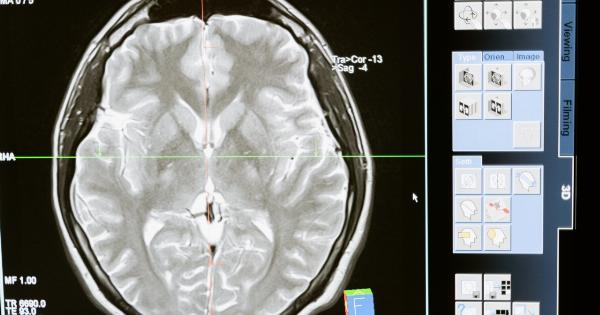Alzheimer’s disease is a neurological disorder characterized by progressive cognitive decline and memory loss.
While age is the most significant risk factor for developing Alzheimer’s disease, genetics also play a crucial role in its onset and progression. Researchers have identified several genes that are associated with an increased risk of developing this debilitating condition.
Understanding the genetics of Alzheimer’s disease can provide valuable insights into its underlying mechanisms and aid in the development of targeted therapies.
1. The Apolipoprotein E (APOE) gene
One of the most well-known genetic risk factors for Alzheimer’s disease is the Apolipoprotein E (APOE) gene. There are three common variants of this gene, designated as ε2, ε3, and ε4.
The ε4 variant is associated with an increased risk of developing Alzheimer’s disease, while the ε2 variant is considered protective.
Studies have shown that individuals who inherit one copy of the APOE ε4 variant have an approximately three times higher risk of developing Alzheimer’s disease, and those who inherit two copies have an even higher risk.
The ε4 variant is also associated with an earlier age of onset.
2. Amyloid precursor protein (APP)
The amyloid precursor protein (APP) gene is involved in the production of beta-amyloid, a protein fragment that forms the characteristic plaques found in the brains of Alzheimer’s patients.
Mutations in the APP gene can lead to an overproduction or accumulation of beta-amyloid, which can trigger neurodegeneration and contribute to the development of Alzheimer’s disease.
Although mutations in the APP gene are relatively rare and account for only a small percentage of Alzheimer’s cases, studying the role of APP in the disease has provided valuable insights into its pathogenesis.
3. Presenilin 1 (PSEN1) gene
The Presenilin 1 (PSEN1) gene encodes a protein involved in the processing of APP and the production of beta-amyloid.
Mutations in PSEN1 are one of the most common causes of early-onset familial Alzheimer’s disease, which typically occurs before the age of 65.
These mutations lead to an increased production of beta-amyloid and result in the accumulation of amyloid plaques in the brain.
The identification of PSEN1 mutations has aided in our understanding of the molecular mechanisms underlying Alzheimer’s disease and has paved the way for the development of targeted therapies.
4. Presenilin 2 (PSEN2) gene
The Presenilin 2 (PSEN2) gene is another gene involved in the processing of APP. Mutations in PSEN2 are less common than PSEN1 mutations but can also cause early-onset familial Alzheimer’s disease.
Similar to PSEN1 mutations, PSEN2 mutations lead to an increased production of beta-amyloid. However, the exact mechanisms by which these mutations contribute to Alzheimer’s disease are still not fully understood.
5. Triggering receptor expressed on myeloid cells 2 (TREM2)
The Triggering receptor expressed on myeloid cells 2 (TREM2) gene is involved in the immune response and inflammation in the brain. Variants in TREM2 have been found to increase the risk of developing Alzheimer’s disease.
TREM2 variants are particularly associated with an increased risk of late-onset Alzheimer’s disease.
These variants impair the ability of microglia, the brain’s immune cells, to clear beta-amyloid plaques, leading to their accumulation and subsequent neurodegeneration.
6. Clusterin (CLU)
The Clusterin (CLU) gene encodes a protein that is involved in various biological processes, including lipid transport and immune regulation. Variants in the CLU gene have been identified as risk factors for late-onset Alzheimer’s disease.
The specific role of CLU in Alzheimer’s disease is still not fully understood.
However, studies have suggested that genetic variants in CLU may contribute to the aggregation of beta-amyloid and the formation of neurofibrillary tangles, another hallmark of Alzheimer’s pathology.
7. Ephrin receptor A1 (EPHA1)
The Ephrin receptor A1 (EPHA1) gene is involved in the development and function of the nervous system. Variants in EPHA1 have been associated with an increased risk of developing Alzheimer’s disease.
The exact mechanisms by which EPHA1 variants contribute to Alzheimer’s disease are not yet clear. However, studies have suggested that these variants may affect neuronal signaling pathways involved in memory and cognition.
8. HLA-DRB5/DRB1
The human leukocyte antigen (HLA) complex plays a crucial role in the immune system and is involved in the recognition and elimination of pathogens.
Variants in the HLA-DRB5/DRB1 genes have been linked to an increased risk of late-onset Alzheimer’s disease.
These variants may influence the immune response and contribute to chronic inflammation, which is believed to play a role in the development and progression of Alzheimer’s disease.
9. Bridging integrator 1 (BIN1)
The Bridging integrator 1 (BIN1) gene is involved in the formation and maintenance of synapses, the connections between neurons in the brain. Variants in the BIN1 gene have been associated with an increased risk of late-onset Alzheimer’s disease.
These variants may affect the expression or function of BIN1, leading to synaptic dysfunction and impaired neuronal communication. This, in turn, can contribute to the cognitive decline observed in Alzheimer’s disease.
10. Genetic risk scores
While each individual genetic variant may only confer a modest risk of developing Alzheimer’s disease, researchers have started using genetic risk scores to assess the cumulative effect of multiple variants.
These risk scores can provide a more comprehensive assessment of an individual’s genetic susceptibility to Alzheimer’s disease.
By combining information from multiple genes associated with Alzheimer’s disease, genetic risk scores can help identify individuals who may benefit from early interventions or personalized treatment strategies.






























